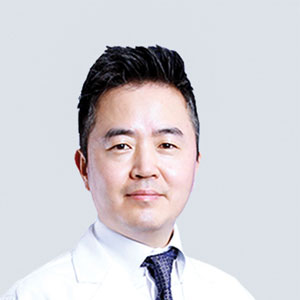THANK YOU FOR SUBSCRIBING
 Soobok Heo, CEO
Soobok Heo, CEOA peek into DDH’s enormous portfolio of solutions and technologies shows the invaluable contributions that the company has made to the medical space. Notable technologies include an MRI-based AI automation solution for analysis of the whole body, an automatic inspection function to detect pulmonary abnormalities, and an automated dental caries detection solution, all of which are AI-based. Besides identifying caries, the panoramic dental image reading technology also captures the number and the position of the cavities as well as the progress of dental caries.
The AI and deep learning-based medical imaging platform, which is the combination of an MRI-based body composition analysis technology applied to NVIDIA’s CLARA, analyze characteristics such as bone mass loss and body fat mass. This technique is used in digital health management programs that check the health status of an individual through a whole-body scan to improve their lifestyle.
Integrated with AI and deep-learning models via DDH’s mesh network architecture, the platform enables disease detection and analysis to happen at a faster rate
DDH’s comprehensive suite of solutions comprises the CEPPRO, LUCENT, and OTR which work toward simplifying the healthcare ecosystem. The company’s automated instrumentation and analysis solution, CEPPRO, automatically extracts the measurements of a dental point, marks them, analyzes and diagnoses the facial type based on the Cephalometric Landmark. The CEPPRO can also be used in orthodontics, making it the perfect analytic solution based on AI. DDH’s technological innovation, the Lucent Digital Calibration System, combines the medical care capacity of dental clinics, and AI to deliver the best results. Lucent is the collective result of a team of experts consisting of a competent professor from the Seoul National University’s College of Dentistry, a professional consulting group with clinical expertise and a CAD/CAM engineering team. An AI solution integrated with medical treatment capabilities, Lucent’s features include an automatic diagnosis program, analysis engine, and auto-setup CAD software.
The company’s Oral and Maxillofacial Tele Radiology or OTR is a remote video reading service for dental diagnostics. The OTR detects diseases of the craniofacial region in the early stages which may otherwise be overlooked by collaborating with the faculty of dentistry at the Seoul National University Dental Hospital. Some of OTR’s highlights include guaranteed objectivity for diagnosis and accuracy, resulting in increased reliance on the guidance offered by the oral facial radiologists. The solution provides great patient satisfaction as patients can receive the readings without any compromise on the quality and need not visit the Seoul National University Dental Hospital directly. Also, when surgical risks such as the excavation of the dorsal root canal are required, it is easy for the patients to obtain a referral to a senior level medical institution via OTR. With OTR, the primary screening can also be done in the comfort of the patient’s home where they can request for a tele-reading and diagnosis from the SNUDH through the OTR cloud platform.
The year ahead looks promising for DDH as the company is planning to expand the use of medical image processing technology through deep learning into the fields of lung cancer and its functional tests, prostate cancer and histopathology and continue improving the accuracy of the examinations.

I agree We use cookies on this website to enhance your user experience. By clicking any link on this page you are giving your consent for us to set cookies. More info













